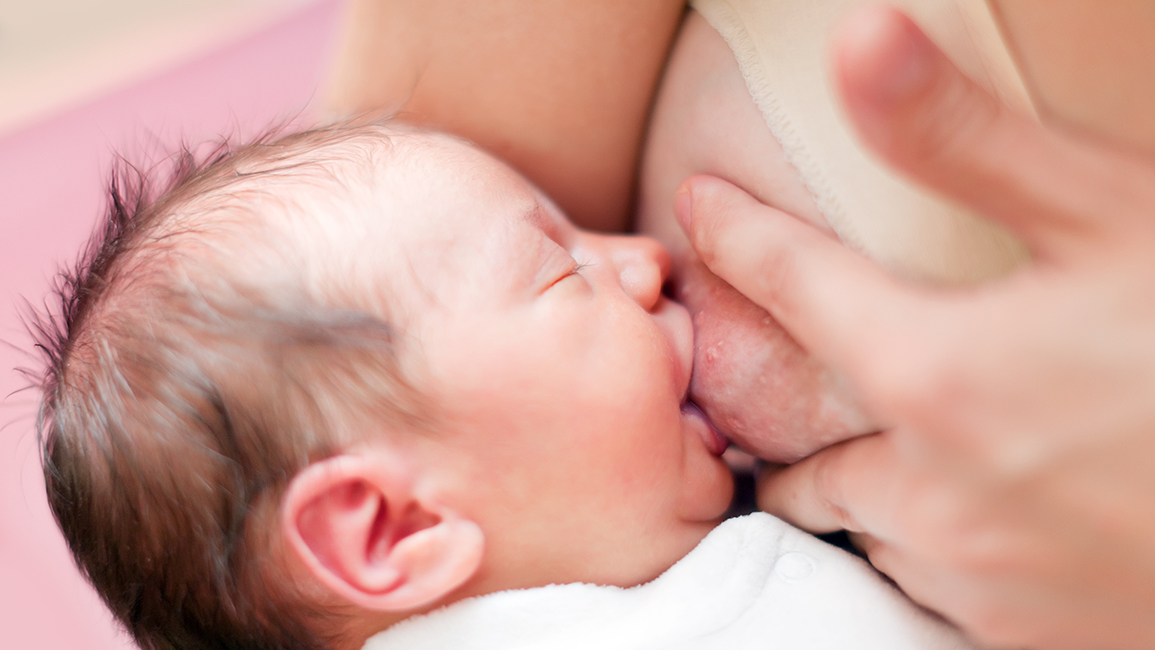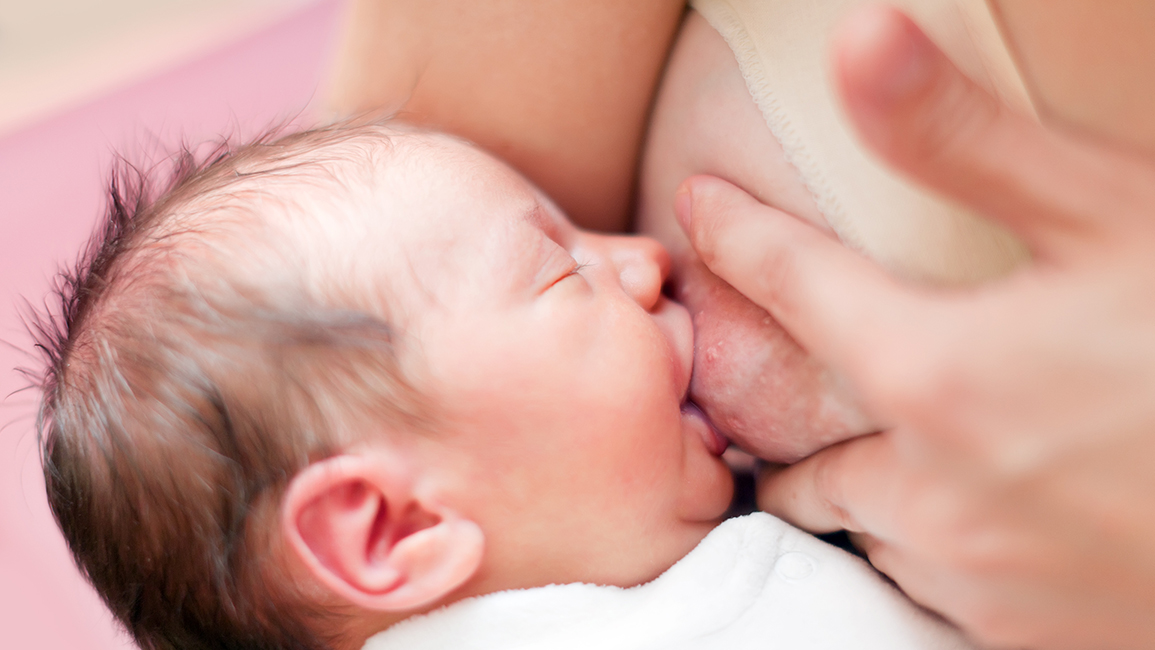Miracle of Breast Milk
Center : Breastfeeding Care Service

The World Health Organization and UNICEF recommend exclusively breastfed infants for 6 months and breastfeeding with complementary foods according appropriately until 2 years old or longer.
The longer the breastfeeding the better
breastfeeding infants who will have 7-10 points higher level of average Q than infants fed with formula milk.
- Infants who are breastfed for 1 month, have a Q level of 99.4 points
- Infants who are breastfed for 1-2 months, have a Q level of 101.7 points
- Infants who are breastfed for 4-6 months, have a Q level of 102.3 points
- Infants who are breastfed for 7-9 months, have a Q level of 104 points
Breast milk is rich in more than 300 nutrients. It contains antibodies that fight off pathogens. Moreover, breast milk is easily digested and absorbed, preventing constipation and lowering the risk of having allergies. Breast milk induces immunity in babies to prevent illnesses. Comparing to infants who are fed with formula milk, it is found that breastfeeding lower the occurring of the following diseases:
- Ulcerative Colitis 20 times
- Meningitis 3.8 times
- Diarrhea - Pneumonia 3.5-4.9 times
- Middle ear infection 3-4 times
- Allergy 2.7 times
Principles to success with breastfeeding
- frequent latching : 8-12 times a day or every 2-3 hours
- long latching : 15-20 minutes per breast
- complete latching
Correct latching
Baby open the mouth wide widely; the lower lip turns out; chin touches the breast and the areola is more visible at the top of the baby’s lip compare to the lower lip.
Incorrect latching
The mouth is not widely opened; the lower lip does not turn out; chin does not touch the mother's breast and the lower areola is visible or both upper and lower areolae are visible.
Storing breast milk
How to expressed breast milk, Reasons for expressed breast milk
- When the mother and the baby have to be temporarily separated, for example the baby need special nursing. The expressed breast milk will stimulate the creation the continuous of milk supply
- To store breast milk for baby when the mother is away
- Reduce the overflow of milk and prevents painful engorgement
How to express breast milk by hand
- Wash hands well
- Clean the nipple by using moistened cotton ball with boiled water and wipe from the nipple and around the areola
- Place thumb on the edge of the areola with the index finger directly opposite each other. The other fingers support the breast.
- Press the index finger and thumb inward towards the center of the breast. Milk will flow out of the nipple. Repeat the process until the breast is empty then change the expressing location around the areola.
Storing expressed breast milk
Breast milk should be prepared enough for one meal for the baby. If there is a lot, separate it into containers. Put label of date and time that is collected. Let the baby feed on the early collected breast milk first.
Information that should be on the breast milk storage bag (Day / month / year)
Breast milk storage bags, breast milk storage containers and milk storage life-span
- Room temperature (25°C = 77°F) can be stored for 4-6 hours
- Refrigerator with normal compartments (4°C = 39 °F), can keep for 24-48 hours
- Freezing compartment; 2-door refrigerator (-20°C = 4°F), can keep for 3 months

Thawing of Frozen Breast Milk
- Thaw during the night in a normal compartment of the refrigerator. The milk can be kept for 24 hours of thawing. When prepare for the baby, warm the milk in a container contains warm water. Do not use hot water because it will destroy proteins and enzymes in breast milk.
- Never thaw or heat breast milk in a microwave.
- Once breast milk is brought to room temperature but has not used; can be store in normal department but have to be used within 4 hours.
- Never refreeze breast milk once it has been thawed.
How to observe that the baby is getting enough milk
- While the baby is feeding, swallowing sound can be heard.
- The breasts feel softer and lighter after feeding.
- Mother can feel milk flowing out
- The baby urine 6 times or more within 24 hours
- The baby defecates 4 -8 times within 24 hours
- The newborn for 3 days passing meconium
- After 3 days of birth, the baby’s stool is yellow and soft texture. The baby is calm, comfortable and rest without disturbing
- After the third day of birth, the baby growth well, strong, and weight is within the normal range. Breastfeeding advice "Breastmilk" is the best food for babies. Breastfeeding is beneficial to both the babies and mothers
Benefit of breastfeeding for baby
- Breast milk has nutrition for baby growth and development
- Breast milk strengthen immunity and reduces the baby’s risk of many illnesses and diseases
- Baby who is breastfed are smart and intelligence
- Baby and mother develop love and attachment between each other. The babies will have good mental health and can adapt well to people and society.
- Baby has good dental health with less risk of teeth decay and teeth overlapping.
- Baby has soft stools which is good for the mother.
Benefits of breastfeeding for mother
- Return to pre-pregnancy size
- Prevention of postpartum hemorrhage
- Uterus return to its regular size more quickly
- Convenient for mother to breastfeed baby at any time
- Reduce the risk of breast cancer and ovarian cancer
Successful guidelines for breastfeeding
- Mother must learn, determined and confident
- Mother should relax and maintain a good feeling when breastfeeding or expressing breast milk to help milk to secrete from breast quickly
- The baby has started to breastfeed immediately and continuously since the birth
- Let the baby breastfeed as often and as needed
- Give the child the right and effective latching method
- Environment supports in hospitals, receiving advice, assistance from doctors and nurses
- Family members encourage and ease the workload of housework
- Compliment from society. It is normal when the baby is breastfed in public
Mechanism of milk production and secretion
When the baby is sucking the nerve on the nipples and the areola will be stimulated sending the signal along the spinal cord to the brain, resulting in the secretion of two hormones that stimulate the mammary glands creating milk. The cells that are wrapped around the mammary glands shrink causing the milk to flow out through the milk ducts. Therefore, allowing the baby to get enough milk. This latter hormone also stimulates the uterus to contract and help to prevent postpartum hemorrhage as well.
Positions in breast-feeding and methods of breastfeeding
- Breastfeeding Carrying Position
- mother can either sit or lie comfortably for breastfeeding
- Hug or hold the baby, the baby’s face is facing the mother, the head and body are in line or slightly bending the head down
- If the mother is breastfeeding in sitting position, find a cushion or pillow to support under the mother's arm to prevent tiring
- Breast Supporting
- Support the breast with the thumb rested on the chest with another 4 fingers place at the edge of the areola.
- Giving nipple for baby to latch on
- If the nipple is not erect, uses index finger to slightly compress the skin under the breast. The nipples will erect
- Tickle baby's lower lip with nipple to encourage baby to open the mouth
- Bring baby forward toward the breast and insert the nipple into the baby’s mouth firmly until both gums press on the areola. The baby’s lips are not pursed
- While sucking the cheeks should not dent, the gums will move towards each other, pressing on the areola in rhythm. Problems regarding not enough breast milk actually it is due to breastfeeding position, sucking is not deep enough and ineffective latch on
- The correct latch on are as followed
- The baby is lying on his side, the stomach is always attached to the mother's belly, whether in a sitting or lying position
- Mouth of the baby is at the mother's nipple. Moved the head towards the nipple latch deeply to the areola
- While the baby is latching on, the tip of the nose touches the breast, leaving some spaces for breathing. The upper and lower lips cover the areola firmly. The tongue is under the areola to get milk into the mouth. The chin is attached to the breast, cheek should not dent
- While breastfeeding the baby will not make a loud noise, the sound of swallowing milk can be heard
Indications of enough breastfeeding
- Baby breastfeeds as needed. Each meal should not be shorter than 3 hours in the first 3 months
- Sucking each breast one by one. When the mother's breast is softer, then change side
- Urine clear, light yellow more than 6-8 times per day in case of exclusive breastfeeding
- Soft, golden, yellow stools 3-5 times per day or more than 10 times per day in the first 2-3 weeks of birth
- Weight gain 500 grams - 1 kilogram during the first 6 months
- The first 6 months, the baby should be exclusive breastfeeding
- After 6 months, start to eat other foods with breast milk continuously until the baby is 1-2 years old
The preparation of stored milk for baby to drink
Milk that is frozen in the refrigerator should be left to cool or warm by soaking the bottle in warm water before letting the baby drink. The already warm milk, if the baby cannot finish, do not keep.
How to feed the baby from a cup or glass
Mother hold the baby on the lap, raise the head in higher position. Then feed the milk by using a cup or glass (The cup or glass should fit the baby's mouth). Gradually feed the baby, beginning in small portion. If the baby can drink without choking, then feed until finish. While feeding the baby from cup or glass, mother should observe the drinking pattern of the baby as well not too fast or too slow.

